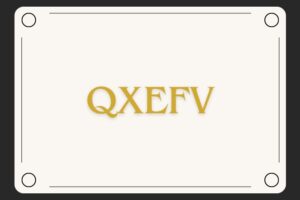There are billions of catalogs, but a well-designed one can do much for a business. It can make your product stand out and work as hard for you as possible.
Use big images and text in your catalog. Adding texture to your catalog is also essential. It makes it easier to read and adds an aesthetic value.

Table of Contents
Custom die-cutting
Adding custom die-cutting is another way to bring creativity to your catalog printing. This technique allows you to make your catalog stand out by creating unique shapes and patterns. These shapes can be anything from simple geometric designs to more elaborate images and illustrations. These creative shapes will grab your audience’s attention and make them want to look at your catalog repeatedly.
You can also use different types of paper for your catalog to give it a unique feel. To add texture, you can try matte, glossy, rough, or smooth finishes. These textures highlight essential features in your catalog, such as an exclusive offer or a new product.
Another way to use creative techniques is by adding a pop of color. Colored text and photos will catch your audience’s eye and help them remember your catalog. However, limiting the number of colors in your design is essential, as too many colors can confuse the reader.
When designing your catalog, ensure all the photos and graphics are high-resolution. This will ensure that your catalog prints out clearly and is easily read. Having someone else look at the finished catalog before it goes to print is also a good idea, as they may spot errors you have yet to notice.
Foil stamping
Foil stamping is a popular way to make text or an area of your design stand out. The process uses heat and pressure to add a thin layer of metalized foil on top of the paper or cardstock. This gives it a shiny, metallic look. It works best on smooth-coated papers, like cast-coated or high gloss stock. Dull or matte-coated stocks also work, but the foil might not adhere. Text weights work, too, although lines that are too fine might get lost.
Foils come in various colors and effects, but gold and silver are the most familiar. They’re often used to add a touch of luxury, but they can also help to draw attention to specific parts of a page or even the entire catalog. The foil can also be combined with other techniques, such as embossing or debossing, to create an even more eye-catching effect.
Another exciting use of foil is highlighting a particular texture on the paper. This can be done by using a color foil that complements the texture of the paper or by adding a holographic element to the foil. If you want to do something more unique, try creating a die cut that reveals part of the next page. This can add fun to the design and keep your readers engaged.
Embossing
Embossing is an excellent way to add a touch of class to your printed materials. It is especially effective when used on small sections of a larger piece, such as a business card or an invitation. This printing technique can give your business a more elegant and professional look, often necessary to build customer trust.
There are many different ways to use embossing to create a unique catalog. You can use it on a logo, text, or image. You can also use a recurring pattern to make the print more interesting. If you choose to emboss, be sure to use a detailed die and heavier paper stock to enhance the detail of the print. Embossing looks best on simple artwork, as it will not distort if the image is shaded or colored. You should avoid using very deep embossing, as it can cause the paper to tear, and save it for the most critical areas of your design.
The style of your catalog should match your brand and audience. For example, use a black-and-white color palette if you are a fashion boutique. Moreover, using contrasting fonts in your designs is a good idea. Sleek, straight fonts convey a professional image, while comprehensive and wobbly fonts express creativity.
Embroidery
Embroidery is another great way to make a catalog look beautiful. It is typically done on various fabrics, including cotton and other natural fibers, silk, felt, canvas (cotton, wool, or linen-like what you would traditionally paint on), and woven textiles. It can also be used on other materials, such as paper, metal grids, plant leaves, and book covers. It is a great way to add a unique touch to any business.
An excellent way to create a catalog that will stand out is by using large photographs and designs. This can make the entire piece more manageable and attractive to readers. In addition, you should use high-resolution digital photographs or pictures scanned at 300 dpi or higher. Otherwise, the printed result will appear pixelated and difficult to read.
The target audience or base customers must be considered when creating a catalog. This will impact the selection of a printing style for the catalog. For example, a catalog for refrigerator accessories will have different features and content than one for home decor.
It is essential to choose a color palette that will complement the design of the catalog. More than 10 million colors worldwide, each having a different effect on the human eye. The color choice will affect how a customer perceives your brand. For example, architecture firms often use neutral colors to maintain a professional image, while fashion and media companies prefer vibrant hues to grab attention.



